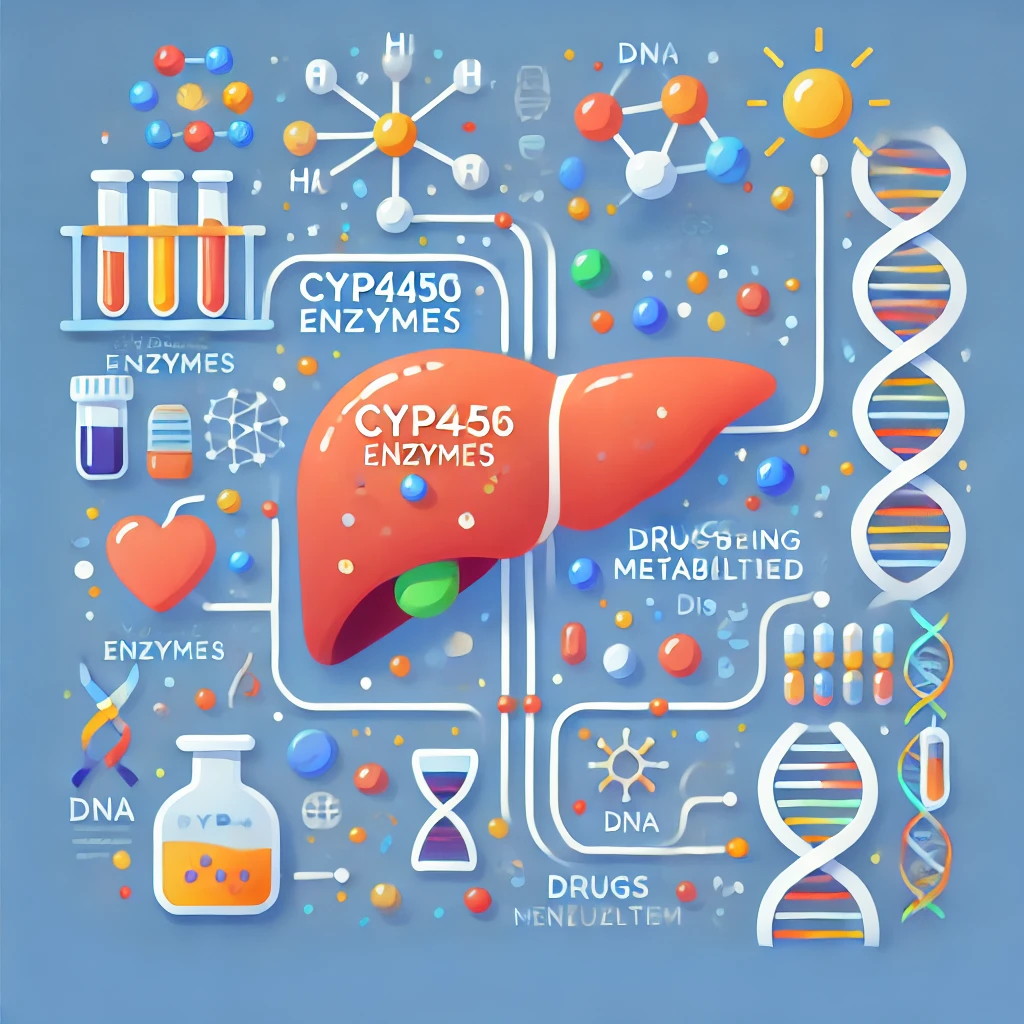
Introduction
Cytochrome P450 (CYP450) enzymes are indispensable players in the intricate symphony of human metabolism, orchestrating the biochemical transformations that sustain life. These versatile enzymes are pivotal in drug metabolism and the regulation of endogenous compounds, impacting everything from hormone balance to cholesterol synthesis. Their influence extends to disease pathogenesis, with genetic polymorphisms in CYP450 genes shaping individual medication responses and susceptibility to various illnesses. Abdelmonem et al’s comprehensive review delves into the multifaceted roles of CYP450 enzymes, exploring their genetic variability, regulatory mechanisms, and therapeutic potential. Join me in unraveling the complexities of these biochemical powerhouses and their profound implications for personalized medicine and disease management.
What is metabolism?
- A complex network of biochemical reactions catalyzed by enzymes.
- Essential for energy production and synthesis of cellular building blocks.
- Drug metabolism converts drugs into active or inactive forms, enhancing water solubility for excretion.
Pharmacogenomics and its significance
- Variability in drug response due to genetic differences.
- Pharmacogenomics studies multiple genetic variations affecting drug efficacy.
- Integration with other omics domains for more personalized treatment approaches.
- Recommendations for pharmacogenomics by scientific organizations aim to enhance therapeutic strategies.
Characteristics of Cytochrome P450 Enzymes
- Superfamily of membrane-bound hemoproteins.
- Present in most body tissues, with significant roles in metabolizing xenobiotics and endogenous compounds.
- Polymorphisms affect enzyme activity and disease susceptibility.
- Involvement in various physiological processes and diseases, including cancer and endocrine disorders.
CYP450 Enzyme Families and Functions:
- 57 CYP450 genes are classified into 18 families.
- Functions include biotransformation, fatty acid metabolism, cholesterol synthesis, and steroid biosynthesis.
- Major families are CYP1, CYP2, and CYP3.
- Enzymes play a role in drug metabolism, hormone synthesis, and detoxification.
What are the factors that regulate CYP450 expression?
- Genetic polymorphisms, drug induction/inhibition, cytokines, nuclear receptors, and transcription factors.
- Epigenetic modifications like DNA methylation and histone modifications impact enzyme expression.
What are the main roles of CYP450 enzymes in endogenous metabolism?
- Hormone Metabolism: Steroid hormones derived from cholesterol are essential for various physiological processes. Moreover, enzymes like CYP11A1, CYP17A1, CYP21A2, CYP11B2, and CYP19A1 play roles in steroidogenesis.
- Fatty Acid and Lipid Metabolism: CYP450 enzymes involved in oxidizing polyunsaturated fatty acids (PUFAs). Enzymes produce hydroxy-PUFAs and epoxy-PUFAs, influencing cellular processes.
Role of CYP450 Enzymes in Diseases
- CYP450 in Disease Pathogenesis: Dysregulation linked to endocrine disorders, cancer, cardiovascular diseases, and neurodegenerative conditions.
- Microbial CYP450: Enzymes in microbes like Mycobacterium tuberculosis and Pseudomonas aeruginosa involved in fatty acid oxidation. These form potential therapeutic targets for infections.
- Cholesterol and Bile Acid Metabolism: CYP450 enzymes like CYP7A1 and CYP8B1 are crucial for bile acid synthesis. Imbalances can lead to diseases like gallstones, cholestasis, and liver disorders.
Conclusions
- Understanding CYP450 roles and genetic polymorphisms is essential for personalized medicine.
- Understanding these enzymes has the potential to develop targeted therapies for various diseases.
- Future research is needed to explore enzyme functions and therapeutic applications further.
This comprehensive review underscores the pivotal role of CYP450 enzymes in metabolism and disease, highlighting their potential in personalized medicine and therapeutic interventions.

